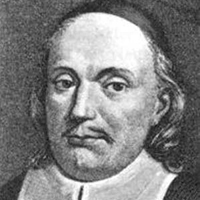History of Hymns: "Jesu, Thy Boundless Love to Me"
“Jesu, Thy Boundless Love to Me”
German hymn by Paul Gerhardt,
translated by John Wesley “Jesu, Thy Boundless Love to Me”
German hymn by Paul Gerhardt,
translated by John Wesley
UM Hymnal, No. 183
Jesu, thy boundless love to me
No thought can reach, no tongue declare;
O knit my thankful heart to thee
and reign without a rival there.
Thine wholly, thine alone, I am;
Be thou alone my constant flame.
John Wesley (1703-1791) became acquainted with Moravians during his voyage to the American colonies in Georgia in 1737. He was soon very interested in this group, and upon returning to London continued to meet with them.
On the trip to Georgia, he was introduced to a hymn by the famous Lutheran pastor and hymn writer Paul Gerhardt (1607-1676) called “O Jesu Christ, meine schönstes Licht.” Wesley was so taken by the hymn that he translated all 16 stanzas into English, and even mentioned it in his final sermon before leaving Georgia, “A Plain Account of Christian Perfection,” quoting the second stanza as “his heart’s cry.” He then published the hymn in Hymns and Sacred Poems (1739). Of the original 16 stanzas, the UM Hymnal now includes only four: the original stanzas one, two, three and 16.
 |
| Paul Gerhardt |
Paul Gerhardt was a prolific and significant hymn writer, composing over 100 hymns. In fact, British hymnologist John Julian, author of Dictionary of Hymnology (1892), stated that “Gerhardt ranks, next to Luther, as the most gifted and popular hymn writer of the Lutheran Church.”
Gerhardt was born in Gräfenhaynichen, near Wittenberg, Germany. He served as a pastor at Mittenwalde (1651-1657) and assistant at St. Nicholas’ Church in Berlin before being removed from the pulpit in 1666 by a Calvinist, Elector Friedrich Wilhelm. From 1668 until his death in 1676, Gerhardt served as archdeacon at Lübben.
Gerhardt’s hymn, “O Jesu Christ, meine schönstes Licht,” was first published in Johann Crüger’s Praxis Pietatis Melica (1653) with 16 stanzas. This hymn was based upon Johann Arnd’s “Paradiesgärtlein” (“Garden of Eden”). Wesley most likely came upon this hymn in the Herrnhut Collection of Count Zinzendorf, which, according to Methodist hymnologist Robert McCutchan in Our Hymnody, would have been the hymnal the Moravians used.
In Hymns and Sacred Poems, Wesley titled this hymn “Living by Christ—from the German.” This seems a very apt title for this hymn because it moves through all stages of life, both the easier times and the difficult times. In stanza three, Wesley depicts Christ’s love as a “ray” melting away sorrows and anguish, much as a ray of sunlight would melt snow.
Wesley also examines the crucifixion in a very personal way in several of the stanzas not found in the UM Hymnal. Christ’s blood is poured out for each person, and Christ’s wounds are impressed upon the heart of the singer. Without Christ’s love for us, our lives are painful and worthless, says Wesley in stanza after stanza.
Scripture is referenced in every stanza of this hymn, but let us take a closer look at the stanzas included in our hymnal. Echoes of Deuteronomy 6:5 (“Love the LORD your God with all your heart, with all your soul, and with all your strength”) can be heard throughout.
 |
| John Wesley |
In the opening line of the hymn, we find the idea of Jesus’ “boundless love” that tongues cannot express nor “thought can reach.” This is also seen in Ephesians 3:18-19, “I pray that you may have the power to comprehend, with all the saints, what is the breadth and length and height and depth, and to know the love of Christ that surpasses knowledge, so that you may be filled with all the fullness of God.”
In the second stanza, Wesley references Ephesians 3:17, Christ’s dwelling in the heart. In the final stanza, he draws upon the paradox found in 2 Corinthians 12:9, Christ’s love being peace in suffering and power in weakness. Paul tells the Corinthians, “And He said to me, ‘My grace is sufficient for you, for My strength is made perfect in weakness.’”
This hymn is a valuable addition to any hymnal as it speaks to living out faith in Christ. It also has a rich history, beautiful imagery and sound theology. Gerhardt and Wesley encourage us to show Christ’s love to our neighbor, knowing that Christ’s love will fill our very souls. May the “boundless love” of Christ transform and unite every believer, and may Christ’s love spill out of the church body to change and remake all of creation. Quoting stanza two, may our “every act, word, thought, be love.”
Ms. Smith, a Master of Sacred Music student at Perkins School of Theology, Southern Methodist University, studies hymnology with Dr. C. Michael Hawn.
Contact Us for Help
View staff by program area to ask for additional assistance.
